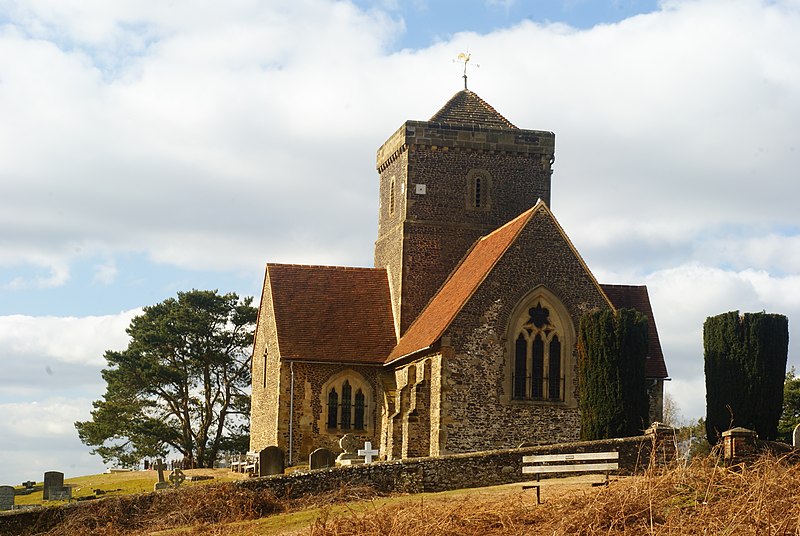Ask any tourist to name a London cathedral; I am sure they will name St Pauls and Westminster, but Southwark probably not. This is not really surprising for whilst the later too regal in pomp and regale in their tourist reputation, Southwark still has that feel of a community cathedral, one whose principle role is to serve as thus it is not surprising that it has established a custom which firmly links it to the thriving market that sits at its feet.
The tradition is one established on an older one and incorporated into a central ritual of the church; communion. The older tradition is Lammas. Lammas, dates from Saxon times, deriving from the old English ‘hlaf masse’ for Loaf mass. It falls on 1 August was established as the thanksgiving for the first products of the wheat harvest. Southwark’s established custom, first begun in 2014, builds upon this celebration of the wheat harvest whilst cementing its ties to a local bakery which lays in its shadow.
Give us our daily bread
The custom begins with with the delivery of the grain which will be used for the bread. The
Dean of Southwark not only blesses this but they will also held mill the wheat to make the flour that will become the Lammas Day bread, a harvest sheaf, a small loaf and several Cathedral loaves for use in the Lammas-tide ceremony. As he does so he recants:
“Moses said to the people ‘When anyone presents a grain offering to the Lord, the offering shall be of choice flour.’ Leviticus 2.1.
Jesus said ‘The earth produces of itself, first the stalk, then the head, then the full grain in the head.’ Mark 4.28″
On the 1st of August or the day nearest too the bakery then prepare for the Dean’s visit to bless the final product. Details of the exact time of the Dean’s arrival were difficult to find so I hung around the area hoping to notice the colourful if rather short procession from the cathedral to the bakery. Sure enough lead by the cross bearer a small party of clergy arrived and entered the bakery where a the loaf awaited them on the table. The dean them blessed the bread and sprinkled holy water around the room stating:
“Let us give thanks for this grain of the new harvest to be milled to make choice flour which will be baked into the Lammas loaf. Lord of the harvest, bless the grain now in our hand bless the miller in their work bless the baker in their task bless the bread that will be baked bless the people to be fed bless the world you love so much and all in the name of Jesus our Lord.
All Amen”
And then asked the manager if there was anything else that needed blessing and he was soon guided around the bakery to bless the bakery, the bakers, all the staff, the millers, the farmers, flour and grain and as much machinery that he laid eyes upon.
Best thing since sliced bread
Everything suitably blessed, workers at the bakery took their newly blessed Lammas loaf and an array of other artistically designed breads and joining the Dean processed back to the cathedral where a Lammas day service was to be held. Dutifully the breads were placed upon the altar with the Lammas loaf central to the display with the Dean raising the bread up, in his presentation and saying:
“Brothers and sisters in Christ, the people of God in ancient times presented to the Lord an offering of first-fruits as a sign of their dependence upon God for their daily bread. On this Lammas Day, we bring a newly baked loaf from newly harvested wheat, baked by Bread Ahead in thanksgiving to God for his faithfulness. Jesus said, ‘I am the bread of life; those who come to me shall never be hungry and those who believe in me shall never thirst.’ John 6.35
The Lammas loaf is brought to the President, who says:
“Blessed are you, Lord God of all creation; you bring forth bread from the fields and give us the fruits of the earth in their seasons. Accept this loaf, which we bring before you, made from the harvest of your goodness. Let it be for us a sign of your fatherly care. Blessed are you, Lord our God, worthy of our thanksgiving and praise.”
The bread is then broken and later in the service given for the communion. Sadly many churches use the communion wafer as they communion offering and there is something more evocative at seeing a real loaf baked locally used in a way which had been done for centuries. Southwark’s Lammas day blessing is a small custom but one which clearly has long links to the past and firmly embedded within its community and as such hopefully will long continue.
















